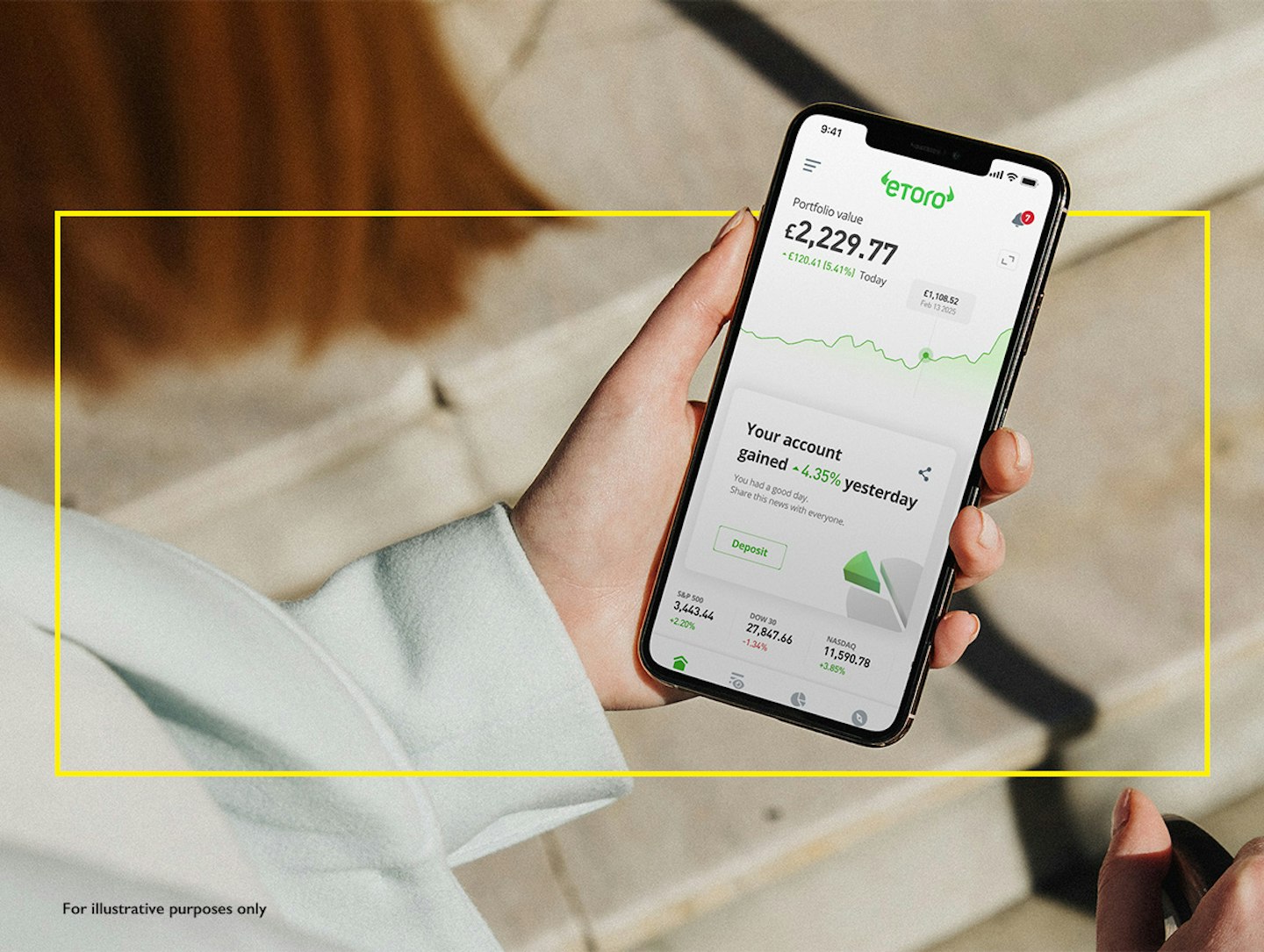If you’re anything like us, hearing that the gender investment gap sits at a whopping £678 billion* makes your stomach turn. Men are making the equivalent of the entire GDP of Switzerland more than us, purely from investments. In fact, men now own 71% of all invested assets in the UK, with younger men investing at double the rate of young women.
If that makes you angry, strap in – because it’s time to do something about it. Most of us would read those statistics and want things to change, but how many of us are willing to make it ourselves? Because while there are a variety of reasons women don’t or won’t invest – from a lack of representation in the industry to women being disproportionately impacted by the cost of living – for many of us the entire arena of investing just feels too overwhelming to make sense of.
That’s certainly how I felt when I first took interest in investing. I’ve never been good with numbers, never saw myself as someone who has ‘enough’ to invest and quickly tune out at the mention of any financial jargon. But then I had to ask myself, is that just a cop out? Because in actual fact there are ways to invest that don’t feel overwhelming, there are readable guides that break things down, and there are ways to start on any budget.
Take the eToro Academy, for example, a free online resource that answers all your questions about investing in one place. In fact, in talking to women they’ve found those who don’t invest often fit into four categories – they’re either lacking confidence in their ability to invest, don’t have enough free time to get to grips with it, don’t think they’ve got enough money or are very risk averse.
Now, we’ve partnered with them to dispel some of those commonly held beliefs and answer some beginner-friendly questions to get started…
What are the different types of investments?
An investment in its simplest form is when you buy something with the hope of its value increasing. These are the most common:
Stocks - a share in the ownership of a company. They represent a claim on the company's assets and earnings.
Crypto - a digital asset in which transactions are verified and records maintained by a decentralised system using code, rather than by a centralised authority like a bank.
Commodities - a raw material or primary agricultural product that can be bought and sold, such as copper or coffee.
ETFs - An Exchange Traded Fund is a type of investment fund that typically contains a basket of assets like stocks, bonds, or commodities. They offer investors diversified exposure to a market or sector.
Currencies (also known as Forex, or Foreign Exchange) involves the buying and selling of currencies, speculating on the price movements of one currency against another, with the aim of making a profit.
Bonds - these are fixed-income securities issued by companies or governments to raise money. When you invest in a bond, you're lending money to the issuer, and in return, you receive regular interest payments (coupons) and the repayment of your principal at maturity (the date the borrower is obligated to repay the lender).
Then there are less typical investments, like buying art, alcohol, watches or handbags that appreciate in value - we all remember the Sex and The City episode with Samantha’s Birkin hunt, right?

What should I think about before I start investing?
‘There’s 6.7million women investors here in the UK, compared to 10 million men,’ says Lale Akoner, eToro’s Global Market Analyst. ‘This is a big gap, but it’s important to understand that there are a lot of accomplished, very successful female investors here in the UK. If we were more open about investing and conversations around money, we’d understand that there are a lot of people who invest and it’s part of their daily life. You don’t need to come from a specific educational background or a certain class, you can even invest with £10.’
How can I mitigate the risks of investing?
There is always a risk of losing money when investing, so don’t invest money you can’t afford to lose. But Akoner says there are ways to mitigate risks.
‘There are certain strategies you can use to decrease that risk, such as diversification across different asset classes or [dollar/pound]-cost averaging.’ Dollar, or pound-cost averaging is the practice of systematically investing equal amounts of money at regular intervals, regardless of the price of an asset, which can reduce the overall impact of price volatility and lower the average cost of your overall purchase price.
Another strategy that can help to reduce risks when it comes to investing involves time. ‘Long-term investing is proven to be one of the best investing strategies due to the compounding snowball effect,’ Akoner continues. ‘But it’s also important to be aware of your risk tolerance. Go with an investment that fits your risk tolerance.’
Do I have to pay to invest my money?
‘There are some things that will incur a fee when you invest in them and others that may not,’ Akoner says. ‘Also, it would depend on which platform you’d be investing on as each would have their own unique set of fees.’
Essentially, it’s important to do your research on whatever you’re investing in and take note of any fees that might be applied.

Now, let’s dispel some myths!
Where to start if you’re not confident
‘It’s normal to feel nervous or anxious when you’re just starting out investing, but there are a lot of tools out there to helpwhere you can gain confidence and knowledge,’ Akoner says. Platforms like eToro have free demo accounts available to you so you can practice investing and get comfortable with it before you take the plunge. ‘Such as eToro’s virtual account that doesn’t involve real money’ says Akoner and as the account comes preset with £100,000 in virtual funds, there’s no need to risk your own money while you learn .
Sometimes, it can help to talk to others who already invest to find out what their experiences have been and what they’ve learned on their journey investing. ‘It’s always a good idea to talk to your peers who you know are investing, share ideas and understand what’s happening in the market.’ Akoner shares, reminding us that there are probably others around us who have been where we are once before too.
Check out the eToro’s free demo account to start practising and building your confidence when it comes to investing. Academy for more information on how to learn and practice for free.
Where to start if you haven’t got much money
When it comes to investing, it is important to only invest what you’re prepared to lose as there’s no guarantee the things you choose to invest in will always do well.
While you might be mistaken in thinking that you need deep pockets to invest, Akoner shares with us that ‘There are lots of things you can invest in with even just £10. Even when it comes to stocks, you don’t have to be investing an entire share of a company, you can even invest in just a fraction of a share.’
How can £10 potentially grow into anything more you might ask? The answer is compound interest. ‘As soon as you start investing, that compounding process starts, it’s kind of like a snowball effect that can help grow your money as well’ says Akoner.
Where to start if you don’t have enough free time
‘You don’t need a lot of time to be able to invest, there are investment platforms and apps available that make it easy,’ Akoner explains. ‘You can automate your investments and make them recurring.’
One really useful time-saving feature on eToro is CopyTrader. ‘CopyTrader on eToro is a feature that allows you to copy top investors, leveraging their skills and knowledge in areas they’re experts in. It copies their activity automatically, so they do the hard work while you can focus on other things in life.’ informs Akoner.

Where to start if you’re risk averse
Of course there are risks when it comes to investing but there are ways to reduce the risks you expose yourself to. ‘Strategies to mitigate risk include diversification, dollar-cost averaging, stop losses,’ says Akoner.
Diversification means spreading your investments across different asset classes and sectors to reduce overall risk by minimising the impact of any single investment's poor performance on your portfolio.
Dollar-cost averaging is the practice of systematically investing equal amounts of money at regular intervals, regardless of the price of the asseta security, which can reduce the overall impact of price volatility and lower the average cost over time per share.
Stop loss orders is when something is bought or sold at market when it reaches a predetermined price known as the ‘stop price.’
Your go-to glossary for beginners:
Stock Market: A marketplace where investors buy and sell shares of publicly traded companies.
ISA (Individual Savings Account): A UK-based savings or investment account where you don’t pay tax on the interest or gains earned. There is a £20,000 per year deposit limit.
Crypto (Cryptoassetscurrency): A digital or virtual assetcurrency secured by cryptography (code), such as Bitcoin or Ethereum, operating on decentraliszed networks (usually blockchain).
Dollar/Pound-Cost Averaging: Investing a consistent sum at set intervals, irrespective of market price, to potentially lower the overall cost per share or unit over time is the essence of dollar/pound cost averaging.
Mutual Fund: An investment vehicle where money from many investors is pooled to buy a diversified portfolio of stocks, bonds, or other securities, managed by professionals.
CopyTraderTM: A feature on eToro that allows you to automatically copy the activity of another investor on the platform for free.
ETF (Exchange Traded Fund): A type of investment fund that trades on stock exchanges like individual stocks and typically tracks the performance of a specific index, sector, commodity, or other basket of assets.
Robo Advisor: An automated digital platform that provides algorithm-driven financial planning and investment management with minimal human supervision.
IPO (Initial Public Offering): The first time a private company offers its shares to the public on the stock market.
Asset: Any resource with economic value owned by an individual or entity, such as cash, stocks, real estate, or equipment.
Diversification: A risk management strategy that mixes a wide variety of investments within a portfolio to reduce exposure to any single asset or risk.
Dividend: A portion of a company’s earnings distributed to shareholders, usually in cash or additional shares.
Compound Interest: The earning of interest not only on the initial investment but also on the accumulated interest from previous periods, leading to exponential growth over timeThe cost of borrowing money, typically expressed as a percentage of the loan amount, or the return earned on savings or investments.
Index: A benchmark or indicator that measures the performance of a group of assets, such as stocks or bonds (e.g., S&P 500, FTSE 100).
Bonds: Debt securities issued by governments or corporations to raise capital, where investors lend money in exchange for periodic interest payments and return of principal at maturity.
Capital Gains: The profit made from selling an asset (like a stock or property) for more than its purchase price.
S&P 500 (Standard & Poor's 500): A stock market index tracking the 500 largest publicly traded companies in the U.S., used as a benchmark for the overall U.S. market.
FTSE 100 (Financial Times Stock Exchange 100 Index): An index of the 100 largest companies listed on the London Stock Exchange, used as a measure of UK market performance.
Ready to turn knowledge into action? Join eToro's free online event, The gateway into Investing, and gain practical insights to kickstart your investment journey. Secure your spot today and take the first step towards financial empowerment here.
*Boring Money 2025
eToro is a multi-asset investment platform. The value of your investments may go up or down. Your capital is at risk.
Copy Trading does not amount to investment advice. The value of your investments may go up or down. Your capital is at risk. Past performance is not an indication of future results.
This communication is for information and education purposes only and should not be taken as investment advice, a personal recommendation, or an offer of, or solicitation to buy or sell, any financial instruments. This material has been prepared without taking into account any particular recipient’s investment objectives or financial situation, and has not been prepared in accordance with the legal and regulatory requirements to promote independent research. Any references to past or future performance of a financial instrument, index or a packaged investment product are not, and should not be taken as, a reliable indicator of future results. eToro makes no representation and assumes no liability as to the accuracy or completeness of the content of this publication.

